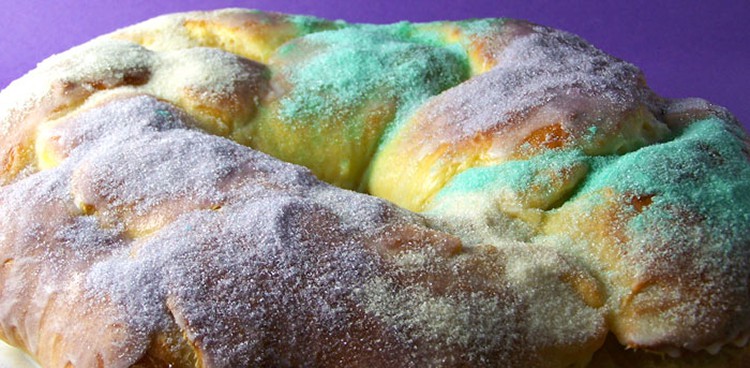
With Fat Tuesday right around the corner, we look at a favorite Carnival indulgence: king cake. This colorfully-decorated, ring-shaped pastry is synonymous with Mardi Gras, and modern variations feature a variety of fillings, a popular one being cream cheese.
King cake is a culinary custom rooted in Christianity that dates back to the 1300s in France. The name itself comes from the fact that it’s eaten on Jan. 6—Epiphany or King’s Day—when the Three Wise Men visited baby Jesus on the twelfth day of Christmas. These sweet, doughy cakes also hold a surprise: a bean, nut, coin, or ring baked inside. Whoever receives the slice with the trinket is crowned “king” or “queen” for the day.
Thanks to French settlers who brought king cake to the colonies, this treat has evolved into a uniquely American tradition. Stateside it’s typically adorned with green, purple, and gold sugars, the three official Mardi Gras colors that symbolize faith, justice, and power. Bakers in NOLA added another twist by embedding a small baby figurine in the cakes. One account recalls how this trend began: A popular king cake baker bought a surplus of porcelain dolls from a traveling salesman in the 1950s. He placed the dolls inside the cakes and later used small plastic dolls when he ran out.
Americans enjoy king cake throughout the Carnival season, right up until Lent begins. In addition to becoming “royal” for a day, the person who finds the baby is responsible for hosting the next party and providing the next king cake. Get in on the fun and bake a more traditional version, or try New Orleans’ celebrity chef Emeril Lagasse’s take filled with cream cheese.
Photo Credit: Emily Carlin | CC



